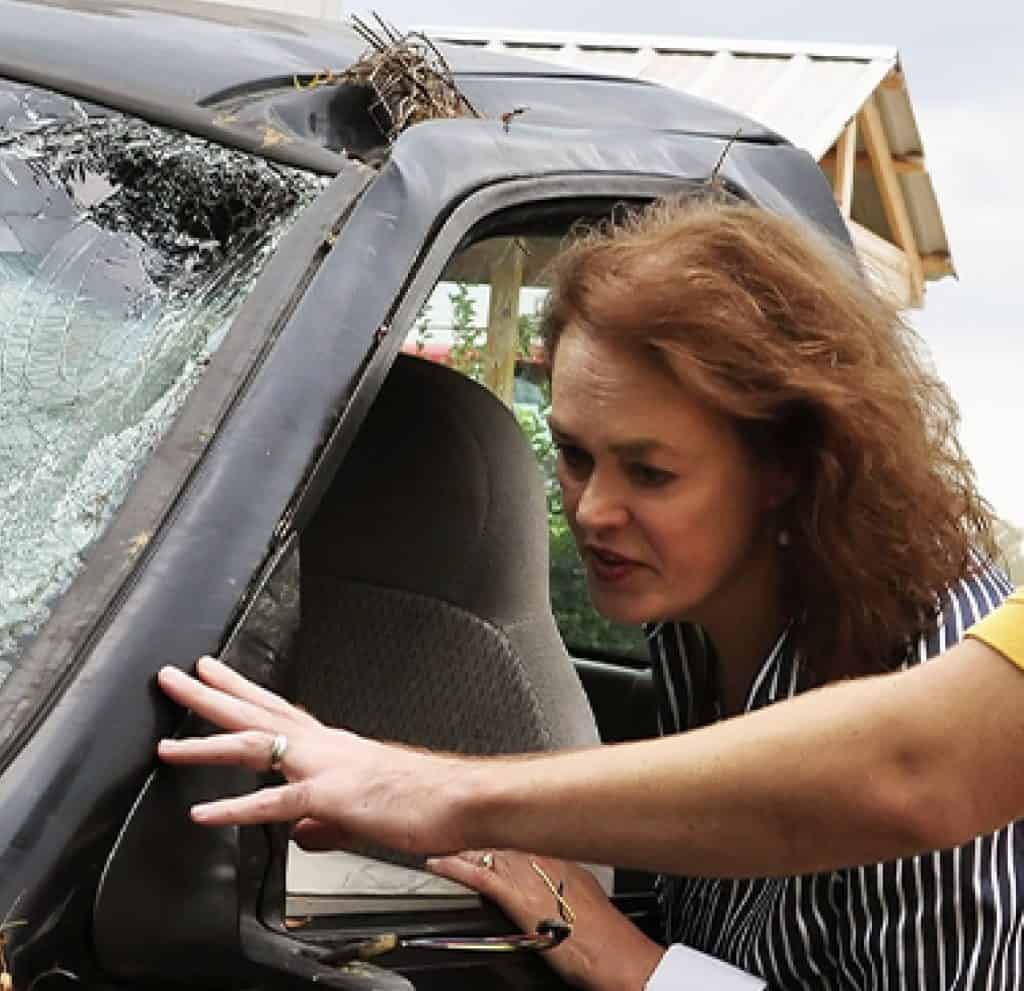
At Flora Templeton Stuart our Kentucky car accident lawyers are committed to offering personal representation for our clients. If you’ve been injured in a vehicle collision, our law offices are open 24/7 for consultations. We frequently meet with clients on weekends and even visit our injured clients in Kentucky & Tennessee when they’re unable to come to our offices in Bowling Green.
Steps We Take To Get You A Top Settlement
We Collect for Our Clients Hurt in Motor Vehicle Accidents
- Medical expenses, past and future
- Disability costs or live-in care
- Disfigurement, loss of limbs, or permanent scarring
- Physical pain and emotional suffering
- Lost wages
- Lost capacity to earn
- Lost love, companionship, and guidance (consortium claim)
"*" indicates required fields
“We Have Recovered Millions of Dollars for Our Clients”




Types of Car, Truck, and Motorcycle Accidents
- Rear-end accidents: Rear-end accidents in Kentucky account for one-fifth of all motor vehicle accidents. However, they only represent 11 percent of fatalities resulting from traffic crashes. Rear-end accidents are frequently caused by tailgating or following too closely. Accidents occur when the front of one vehicle strikes the rear of another vehicle. In addition to tailgating, this type of accident is also commonly caused by speeding. Driving at excessive speeds reduces the time a driver has to perceive a roadway hazard like a car suddenly stopping ahead. Further, speeding increases the distance required for a vehicle to come to a safe stop. Distracted driving commonly contributes to causing rear-end collisions.
- Broadside collisions: Also known as angle collisions or T-bone accidents, broadside collisions are the most prevalent type of vehicle accident in Kentucky. In 2018, broadside collisions represented 30.4 percent of all car accidents statewide, accounting for 41.2 percent of all traffic accident fatalities. Most often, these collisions occur in an intersection when one driver fails to yield the right-of-way to another. Broadside collisions pose an extreme risk of serious injury and fatality for occupants on the impacted side of the vehicle.
- Sideswipe collisions: Sideswipe accidents account for nearly 20 percent of all accidents in Kentucky and about 4 percent of all accident fatalities. Sideswipe collisions involve the side of one vehicle striking the side of another. They’re often caused by improper lane changes. For instance, a driver may fail to ensure an adjacent lane is clear before quickly passing into it.
- Head-on crashes: In 2018, about 3 percent of the car accidents in Kentucky were classified as head-on crashes. However, head-on crashes accounted for 35.6 percent of all accident fatalities in the state. Head-on collisions involve the front of one vehicle colliding with the front of another vehicle. Head-on crashes frequently result in death or serious injury. The forward motion of both vehicles coupled with their speed increases the intensity of the impact.
- Single-vehicle crashes: Many accidents involve only one vehicle. Typically, a vehicle will collide with an object, animal, or even a pedestrian or bicyclist. In Kentucky, in 2018, 1,511 vehicles struck other objects. Another 1,024 accidents involved pedestrians. The majority of single-vehicle crashes, 3,073, involved a collision with a deer, and only 332 involved a collision with a bicyclist.
- Chain-reaction crashes: In contrast to single-vehicle crashes, chain-reaction crashes are those that involve three or more vehicles. Often, chain-reaction crashes are caused when the impact of two vehicles colliding causes one of the cars to strike a third vehicle. Pileups are a type of chain reaction crash occurring at highway speeds on the interstate. They typically involve a number of vehicles that cannot stop in time to avoid the initial crash. Pileups are particularly dangerous because a single vehicle may be involved in numerous consecutive collisions within a short time frame. In addition, accident victims may increase their risk of injury by exiting the vehicle while subsequent collisions are taking place.
- Rollover crashes: Rollover crashes can happen in one of two ways. First, they may result from a vehicle colliding with an object or another vehicle, which creates an imbalance causing a rollover. Second, a rollover may result from losing control around a sharp curve, over-correcting mistakes, or running off the road. Vehicles with a high center of gravity, e.g. trucks, vans, or SUVs are especially at risk due to their inherent instability.
- Front-End Crashes: As the name implies, a front-end crash happens when you drive into another car or object with the front end of your vehicle. It is also considered to be a front-end crash when another person drives into the front end of your vehicle in a head-on collision. These crashes can lead to serious injuries due to the ineffectiveness of the seatbelt in these crashes.
Covered On This Page

Our team has a five-step process for collecting vehicle accident compensation for victims of car collisions. We’ll investigate your case, open claims with your health insurance provider, collect your medical records and refer you to great doctors, set up annuities and college funds for injured children, and negotiate for the settlement you deserve.
- Medical expenses, past and future
- Disfigurement, loss of limb, permanent scarring
- Lost wages
- Lose love, companionship, and guidance
- Disability costs or live-in care
- Physical pain and emotional suffering
- Lost capacity to earn
What Causes Car Accidents?
Many types of auto accidents exist, as do causes for crashes. Some of the most common causes include:
- Distracted driving: A person driving at 55 miles per travels the length of a football field in only five seconds. While all distractions are dangerous, texting and other cell phone use are among the most dangerous of driving distractions. It is not uncommon for drivers to take five seconds or more to read or reply to a text message while driving. While texting, a driver’s eyes are off the road, the mind is off driving, and at least one hand is off the wheel. Some other common distractions include eating or drinking, visiting with other passengers, adjusting vehicle or stereo controls, and applying makeup. Drivers may also be distracted by external factors including billboards, people in other cars, or even previous accidents.
- Alcohol and drug impairment: In one recent year, alcohol-impaired drivers caused 4,736 collisions in Kentucky. Alcohol impairment contributed to 113 fatal collisions and 1,585 accidents involving injuries. According to the National Highway Traffic Safety Administration, one person dies in the United States every 39 minutes in drunk-driving crashes. In 2022, 13,524 people died in alcohol-impaired driving traffic deaths. Alcohol impairment causes significant reductions in the motor functioning required for the safe operation of a motor vehicle. The use of alcohol may decrease a driver’s ability to process information or to maintain one’s own lane of travel. In addition, alcohol can affect the ability to steer and brake effectively, respond to emergencies, and focus on the task of driving.
- Speeding: In one recent year, 9,378 people died from accidents that were caused by speeding in the United States. As such, speeding is one of the most deadly driving behaviors. As mentioned, speeding reduces a driver’s reaction time and increases the distance required to stop a vehicle. Additionally, speeding prevents your vehicle’s protective features—such as the steel frame, seat belts, and airbags—from working effectively. Speeding is not only driving faster than the posted speed limit. Speeding also includes driving too fast for the conditions of the road. For example, in inclement weather or traffic congestion, it is likely hazardous to travel at the posted speed.
- Fatigue: Extreme fatigue in drivers manifests many impairments similar to alcohol impairment. Fatigue may result in slower reaction times and the inability to maintain one’s lane. All drivers are at risk of fatigue without the appropriate amount of sleep each night. However, those at particular risk include long-haul truck drivers, shift workers, and individuals suffering from sleep apnea. Sleep apnea is a disorder that causes a person to briefly stop breathing numerous times during sleep, resulting in low-quality sleep.
- Failure to yield: Failure to yield includes running red lights and stop signs. In addition, turning onto a street from a parking lot or driveway without waiting for a sufficient gap in traffic also constitutes a failure to yield. A failure to yield is the most common cause of accidents occurring in intersections. Intersection accidents account for more than a quarter of all accidents in Kentucky.
- Inclement weather: Rain, fog, and snow are driving hazards that may reduce visibility and create slick roads. Inclement weather can increase the risk of an accident.
- Defective auto parts: Manufacturers and distributors of vehicle parts have the responsibility to ensure that those parts are safe for use by consumers. Some defective parts may result in accidents, including defective tail lights, turn signals, brake or steering systems, and tires.
What to Do After a Car Accident
The steps you take immediately after a car accident impact your ability to recover compensation and damages. The first step is to ensure your immediate safety and seek medical help. If possible, exchange license and auto insurance information with the other driver and document the scene by taking photos and gathering witness statements.
Contact Flora Templeton Stuart for assistance as soon as you are able. We’ll guide you through the entire process and help protect your rights. Our team will handle everything from investigating the accident to negotiating with your insurance company. We’re here to fight for the compensation you deserve while you focus on your recovery.
Covered On This Page
Several types of insurance coverage that will pay if you’re injured in an automobile collision:
Personal Injury Protection: The vehicle you are in is the primary coverage for payment of Personal Injury Protection (PIP) in Kentucky. PIP has minimal limits of $10,000 and pays medical expenses, lost income, home care, and even a portion of funeral expenses. Kentucky automobile accident lawyers reserve these benefits so medical bills and lost wages will get paid. PIP is repaid by the party at fault.
Liability: The at-fault driver pays for injuries caused to another through their liability policy, which in Kentucky has a minimum policy of $25,000 per person / $50,000 per accident and a maximum can be in the millions with a commercial insurance policy.
Uninsured Motorist: If the driver at fault did not have insurance you can collect on your uninsured motorist’s coverage on your own insurance policy.
Underinsured Motorist: If the at-fault driver of the vehicle had insurance but not enough or your injuries are greater than that amount you can collect on underinsured motorists. Flora Templeton Stuart will make sure all underinsured policies are uncovered for maximum recovery.
Negligence in car accidents typically involves a driver failing to exercise reasonable care. As Kentucky car crash lawyers, before we can take action against the liable party, we need to prove that their negligence led to the accident. We do this by establishing the following elements of negligence:
Duty of care: The at-fault party had a responsibility to keep you safe by following all traffic laws.
Breach of duty: The at-fault party breached their duty of care, instead acting negligently.
Causation: The at-fault party’s actions or inactions caused you to suffer an accident and injuries.
Damages: You suffered damages, such as pain and suffering and property damage, because of the at-fault party’s negligence.
Our team will gather evidence to prove negligence, including police reports, witness statements, and surveillance footage.
Under the “no-fault” car insurance system in Kentucky, drivers are required to carry a minimum of $10,000 in Personal Injury Protection (PIP) insurance. Regardless of who causes the accident, PIP covers medical expenses and lost wages. However, if you’re in an accident, you can opt out of the no-fault system to pursue auto injury claims against the at-fault driver and possibly receive more vehicle accident compensation.
Statute of Limitations in Kentucky and Tennessee
In vehicle accidents, there is a limited amount of time to sue. In Kentucky, you have two years after the wreck to sue which can be extended with PIP benefits being paid, as per Ky. Rev. Stat. § 304.39-230(6). In Tennessee, you only have one year to file an auto accident lawsuit. Time limits for minors start when they turn 18. The Statute of Limitations for Wrongful Death cases is governed by KRS 413.140.
Frequently Asked Questions
How are we different?
As a Kentucky automobile accident lawyer, Flora personally oversees all cases for her injured clients putting her 50 years of experience to negotiate top settlements.
How are we paid?
We are only paid if we win your case. This is a contingency fee agreement where our clients pay nothing unless we collect damages for them.
How long will my case take?
At our law firm, we work to not only get our clients the medical treatment they need, but once they have completed treatment we negotiate for the maximum settlement we can obtain in the shortest period possible.
Who pays for my car damage?
If you have full coverage or collision on your vehicle you may have your own insurance pay the damage and/or replacement of your vehicle paid back from the party at fault. If you do not have collision or do not desire to collect from your own company you can collect from the party at fault directly. Our law firm receives no fee when representing clients to collect their vehicle damage.
Who pays my medical bills?
While Personal Injury Protection (PIP) is primary it pays $10,000 in medical expenses. In most cases, your own health insurance will pay bills in excess of that amount. We work to see that medical bills are all paid when your case is settled.
What type of auto accident cases do your handle?
Personal injury attorney Flora Templeton Stuart has decades of experience representing clients injured due to car wrecks, semi accidents, hit-and-run accidents, DUI accidents, motorcycle wrecks, pedestrian accidents, bicycle accidents, truck wrecks, bus, Uber/Lyft/Taxicab, and other motor vehicle accidents. If you or a loved one has been injured or killed in an auto accident that wasn’t your fault, contact our Bowling Green car crash lawyers in Kentucky for a free case evaluation. We can help you secure all the compensation you deserve.






